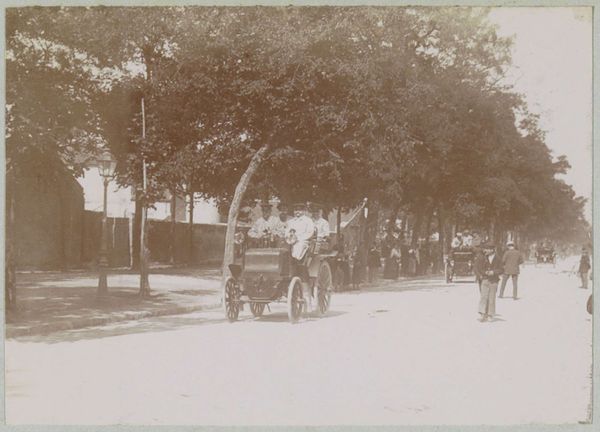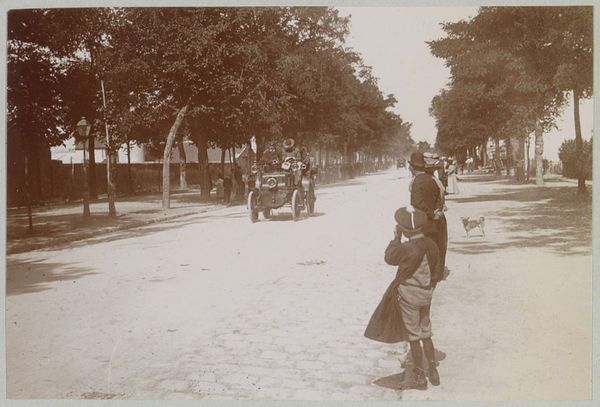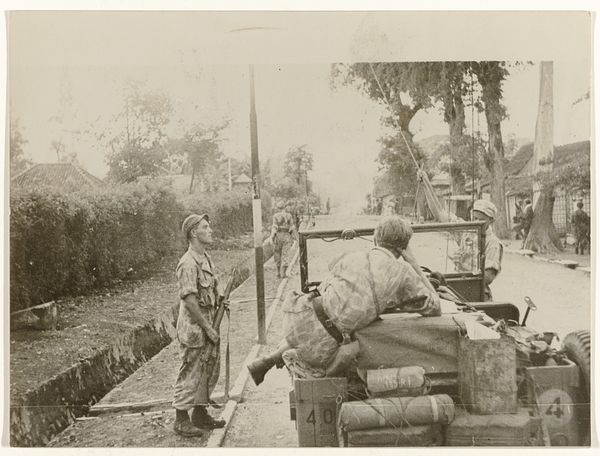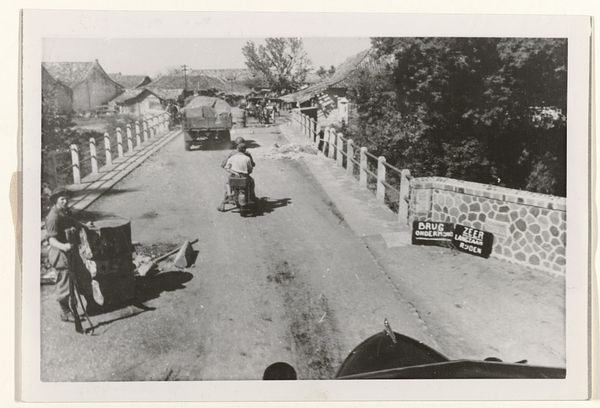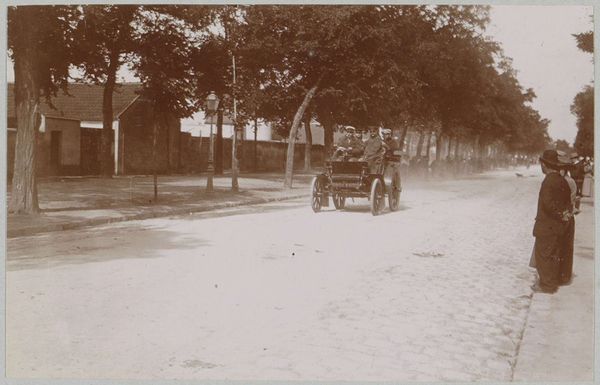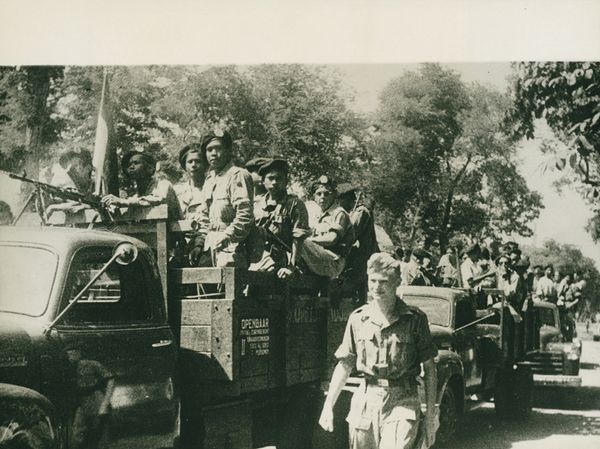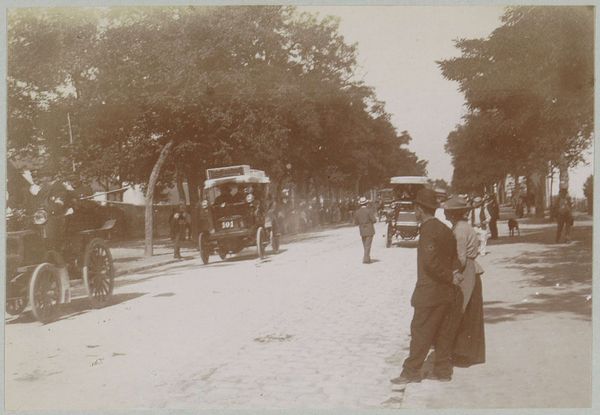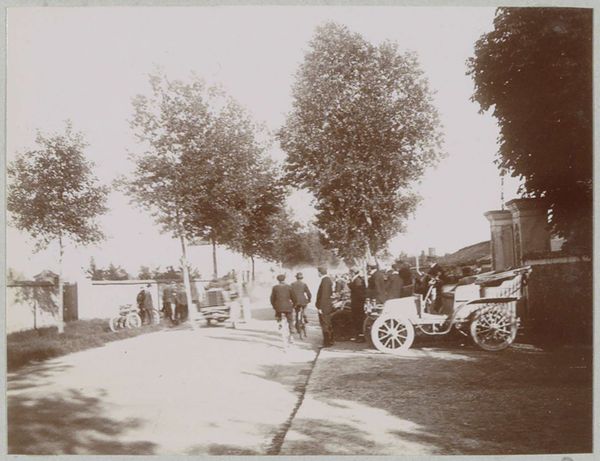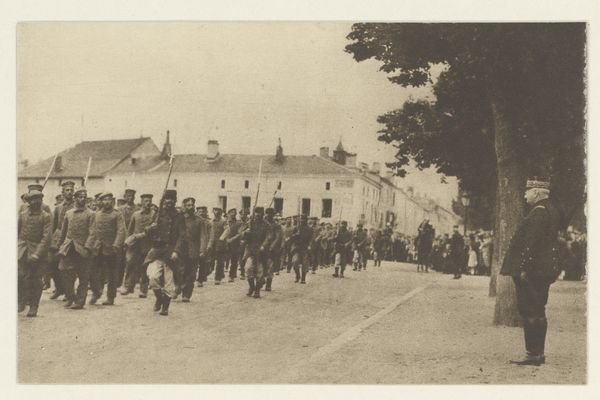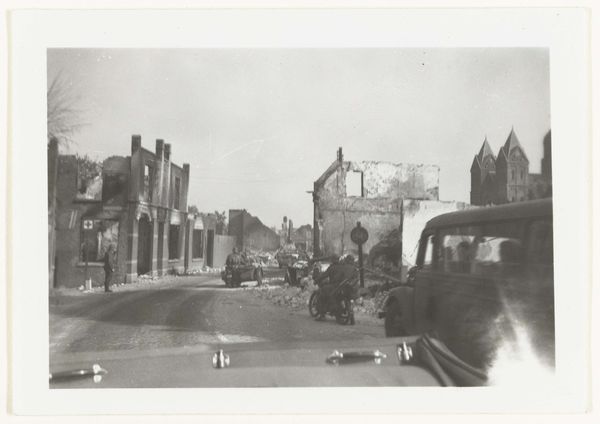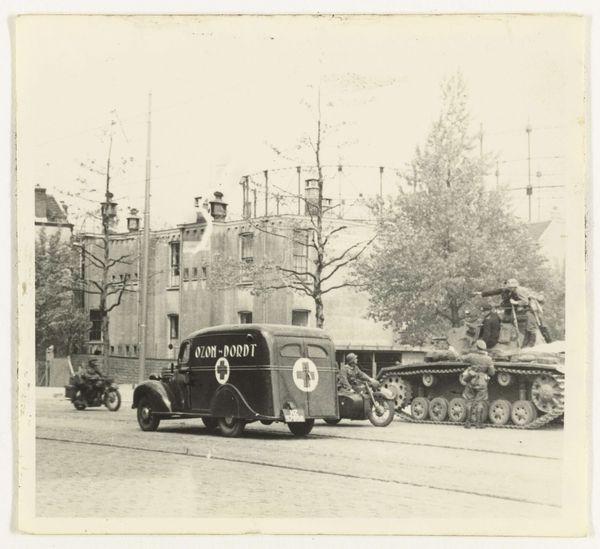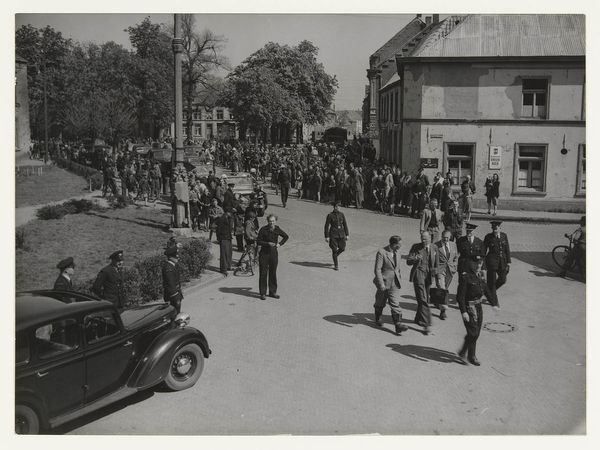
Nederlandse troepen rukken onder dekking van brengun carriers op in Solo Possibly 1948 - 1949
0:00
0:00
associatedpress
Rijksmuseum
#
print photography
#
photo of handprinted image
#
wedding photograph
#
photo restoration
#
wedding photography
#
unrealistic statue
#
couple photography
#
monochrome photography
#
19th century
#
shadow overcast
Dimensions: width 20 cm, height 14.5 cm
Copyright: Rijks Museum: Open Domain
Editor: Here we have "Nederlandse troepen rukken onder dekking van brengun carriers op in Solo," or, "Dutch troops advancing under cover of Bren gun carriers in Solo," a photograph, likely from 1948-1949, attributed to the Associated Press and held at the Rijksmuseum. It feels immediately like a document of a conflict. What does this image say to you? Curator: It speaks to a very specific moment in Dutch colonial history, the Indonesian National Revolution. The photograph isn't just a neutral record; it actively participates in constructing a particular narrative. Who do you think was the intended audience for this image? Editor: Possibly a Dutch audience back home? Perhaps to garner support for the military actions? Curator: Precisely. Think about how the photograph is composed. The "Bren gun carriers" appear as protectors, the troops moving forward seemingly with purpose. The "cover" suggests protection and righteous action, shaping public opinion. We see soldiers with a backdrop of tropical foliage and what appear to be homes and villagers nearby, implicating Indonesian society into the unfolding drama. What details do you think might complicate that heroic interpretation? Editor: Well, the shadow overcast definitely makes it more somber. The very presence of soldiers implies a power imbalance and suggests an act of war rather than protection. Curator: Exactly. The seemingly neutral document can become evidence in constructing an account that also highlights social inequities and imbalances of power. Photojournalism often works this way; these seemingly objective records carry ideological weight. How can we, as viewers, be more critical consumers of these images? Editor: I think understanding the historical context and asking questions about the photographer's intentions is a great start. Thinking about the narrative being presented and who benefits from it also makes a lot of sense. Curator: Precisely. It shows how one piece of media serves multiple historical narratives at once.
Comments
No comments
Be the first to comment and join the conversation on the ultimate creative platform.
